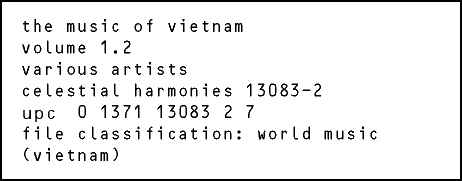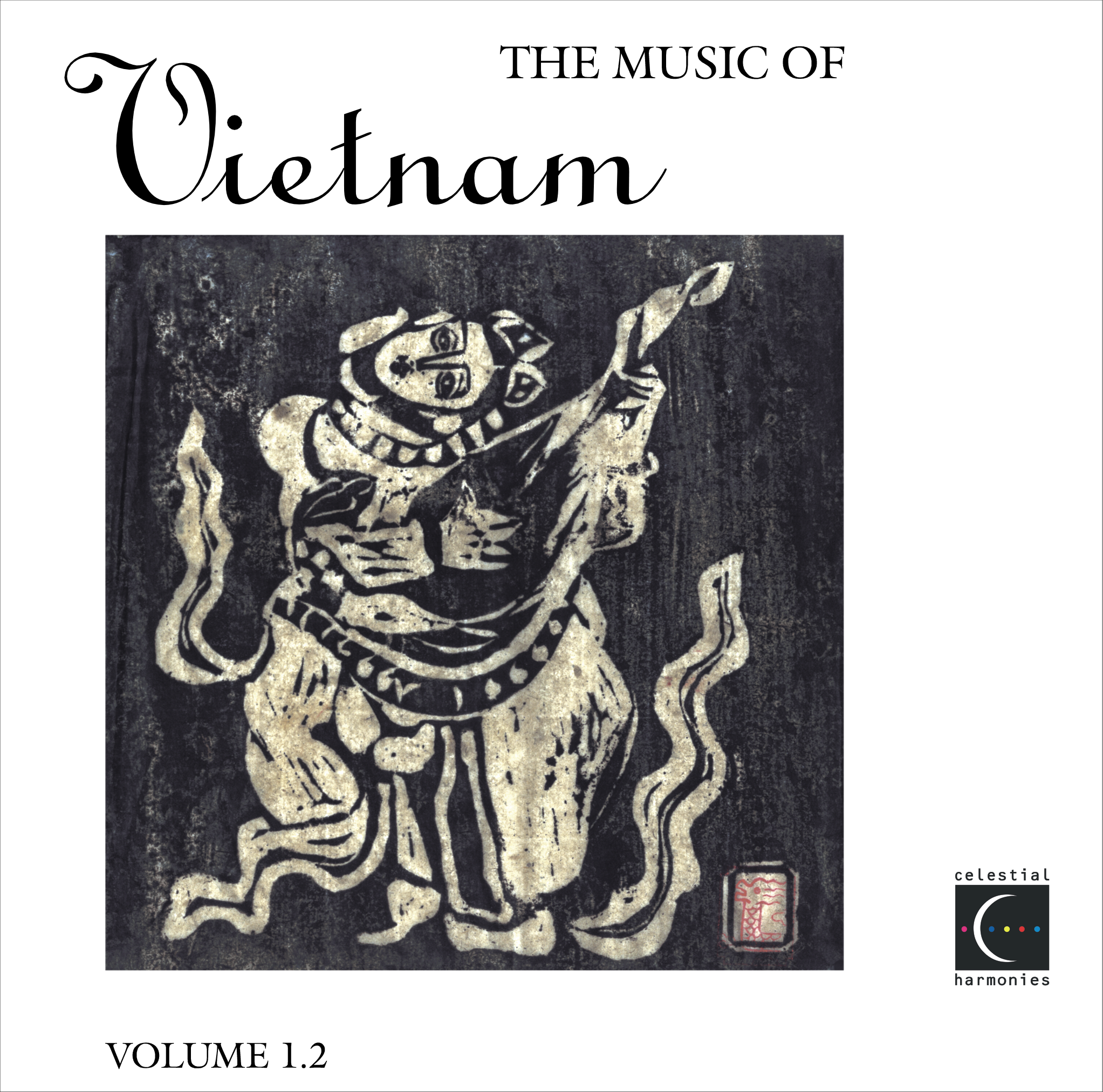 |
||||||||||||||||||||||||||||||||||||||||||||||||||||||
 
the projectImagine a country whose instrumental heritage includes
a thousand–year-old, one–string precursor to the electric
guitar: a country where you can play a percussion instrument without
actually touching it; a country where one-hole flutes and strange
rifle–shaped mouth harps are more common than a piano. Imagine
a country whose history and music have been shaped by struggles with
Chinese, French, Japanese, and American invasions. You might expect
this country's music to be wildly colorful, exotic, and complex—and
you would be right. The Music of Vietnam offers listeners a
rare opportunity to sample the remarklable variety of traditional
Vietnamese music: from ensemble works with a clear Chinese influence
to solo pieces for the odd instruments of Vietnam's many tribal minorities.
Volumes 1.1 and 1.2 of The Music of Vietnam focus on the traditional music of the Vietnamese people themselves, as opposed to the folk music of the ethnic groups that live in Vietnam's highlands and plateaus. Within the Vietnamese tradition there are many surprisees. Works that draw on the trance and percussion music of ancient Buddhist healers appear alongside old Vietnamese theater folk ensembles, but others are definitely a product of musicians who have studied Western classical and pop music. Familiar chord progressions may grace a souther Vietnamese harvest song, while another work based on religious ritual music may have an acoustic funk backbeat, thanks to the subtle and energetic tradition of Vietnamese percussion. For Western listeners, especially those for whom Vietnam signifies a war and nothing more, The Music of Vietnam will be an ear–opening experience. the artistsThe multi-talented performers on both Volumes 1.1
and 1.2 are based in Hanoi, and several are on the staff of the Hanoi
Conservatory of Music. These recordings represent the first time this
all–star lineup actually performed together as a whole.
These recordings are produced by
tracklist
|
||||||||||||||||||||||||||||||||||||||||||||||||||||||
|
|
||||||||||||||||||||||||||||||||||||||||||||||||||||||
 |


